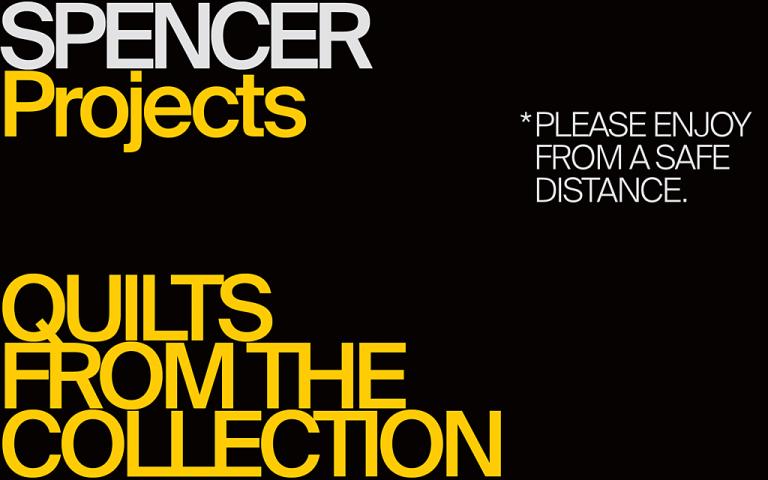George Washington Bi-Centennial quilt, Carrie A. Hall
Artwork Overview
If you wish to reproduce this image, please submit an image request
Images
Label texts
In 1932, Leavenworth seamstress Carrie Hall commemorated the two-hundredth anniversary of George Washington’s birth by creating a quilt. She adapted a pattern she found in a syndicated newspaper column, using both traditional and contemporary design to symbolize the popular myth of George Washington’s chopping a cherry tree and confessing to his father. In a label on the reverse Hall wrote: “The center is framed by a silhouette surrounded by two rows of hatchets. The row of cherry trees next…the outer row next represents Washington Pavement…For sale-Price $59.”
The silhouette portrait from the newspaper pattern, as well as the anniversary celebration, reflects an interest in early American history and design that is known as the Colonial Revival, a design idea that competed with modernism in home décor, architecture and quilts. This quilt, with its checkerboard trees and geometric border, combines modernism’s love of repeat pattern with Colonial nostalgia.
Carrie Hall, like Mary Stayman, was a professional seamstress in Leavenworth. She finished over sixteen quilts and more than eight hundred quilt blocks during the 1920s and early 1930s. She photographed the blocks, which she donated to The University of Kansas, for a book co-authored with Rose Kretsinger. The Romance of the Patchwork Quilt in America was the primary index to quilt pattern names for forty years.
In 1932, Leavenworth seamstress Carrie Hall commemorated the two-hundredth anniversary of George Washington’s birth by creating a quilt. She adapted a pattern she found in a syndicated newspaper column, using both traditional and contemporary design to symbolize the popular myth of George Washington’s chopping a cherry tree and confessing to his father. In a label on the reverse Hall wrote:
“The center is framed by a silhouette surrounded by two rows of hatchets. The row of cherry trees next…the outer row next represents Washington Pavement…For sale-Price $59.”
The silhouette portrait from the newspaper pattern, as well as the anniversary celebration, reflects an interest in early American history and design that is known as the Colonial Revival, a design idea that competed with modernism in home décor, architecture and quilts. This quilt, with its checkerboard trees and geometric border, combines modernism’s love of repeat pattern with Colonial nostalgia.
Carrie Hall, like Mary Stayman, was a professional seamstress in Leavenworth. She finished over sixteen quilts and more than eight hundred quilt blocks during the 1920s and early 1930s. She photographed the blocks, which she donated to The University of Kansas, for a book co-authored with Rose Kretsinger. The Romance of the Patchwork Quilt in America was the primary index to quilt pattern names for forty years.
Exhibition Label:
"Quilts: A Thread of Modernism" Aug-2005, Debra Thimmesch and Barbara Brackman
In 1932, Leavenworth seamstress Carrie Hall commemorated the two-hundredth anniversary of George Washington’s birth by creating a quilt. She adapted a pattern she found in a syndicated newspaper column, using both traditional and contemporary design to symbolize the popular myth of George Washington’s chopping a cherry tree and confessing to his father. In a label on the reverse Hall wrote:
“The center is framed by a silhouette surrounded by two rows of hatchets. The row of cherry trees next…the outer row next represents Washington Pavement…For sale-Price $59.”
The silhouette portrait from the newspaper pattern, as well as the anniversary celebration, reflects an interest in early American history and design that is known as the Colonial Revival, a design idea that competed with modernism in home décor, architecture and quilts. This quilt, with its checkerboard trees and geometric border, combines modernism’s love of repeat pattern with Colonial nostalgia.
Carrie Hall, like Mary Stayman, was a professional seamstress in Leavenworth. She finished over sixteen quilts and more than eight hundred quilt blocks during the 1920s and early 1930s. She photographed the blocks, which she donated to The University of Kansas, for a book co-authored with Rose Kretsinger. The Romance of the Patchwork Quilt in America was the primary index to quilt pattern names for forty years.
Exhibitions
Joyce Gross, curator






















